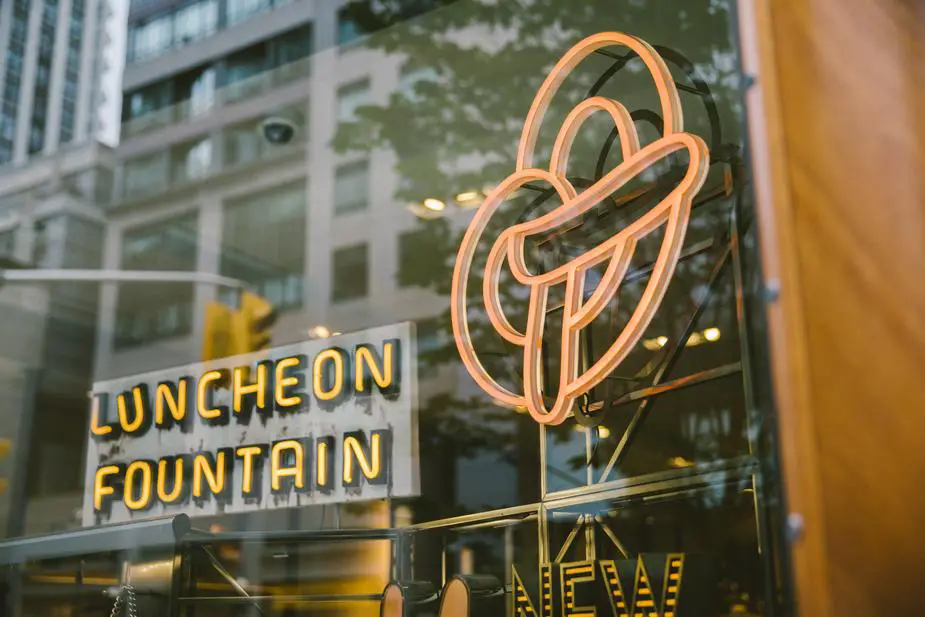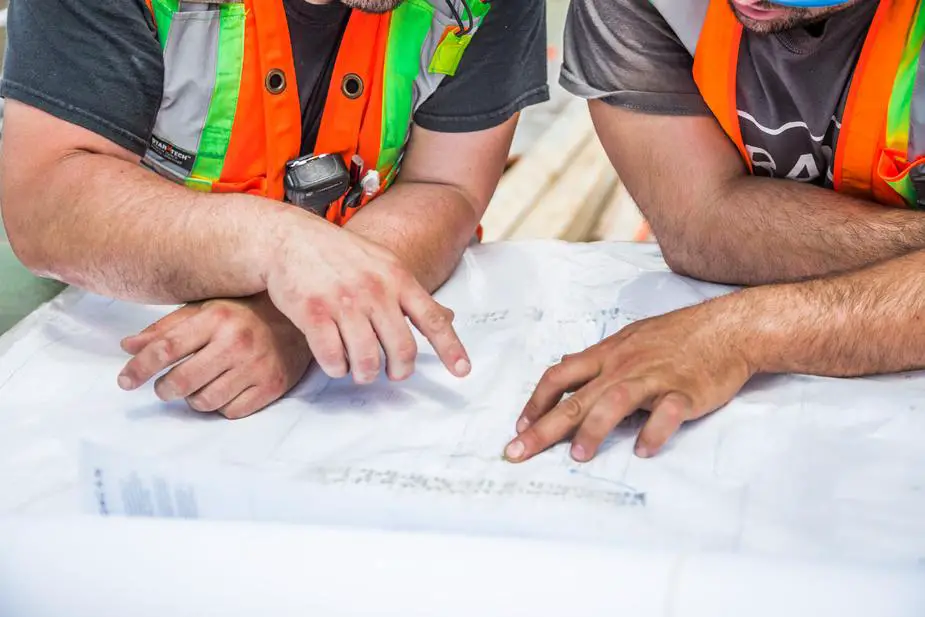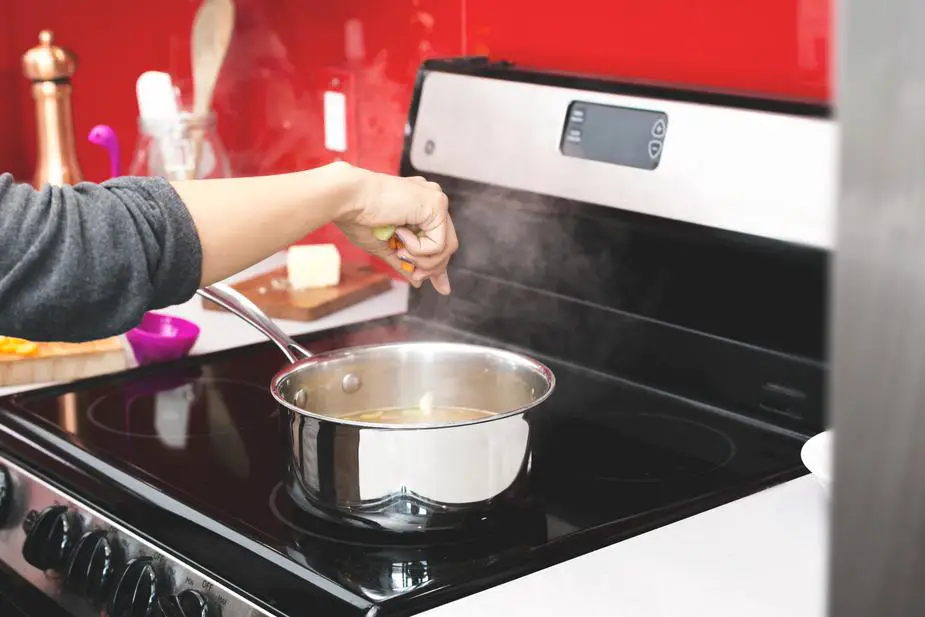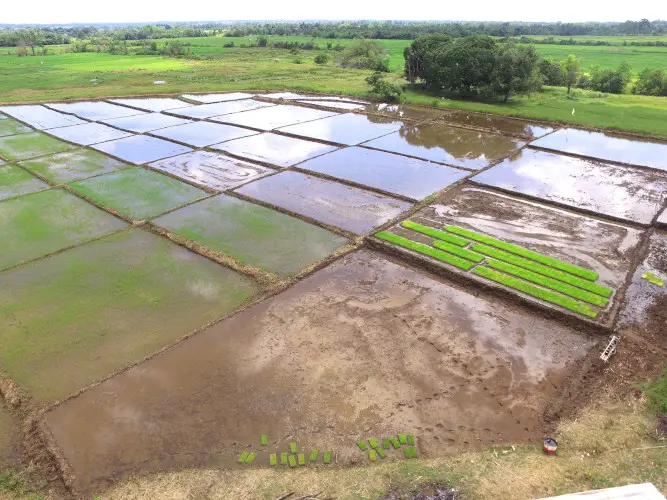We own 3 food cart businesses from 2 different franchises. We’re also friends with 11 other groups who collectively own 14 other food cart business franchises. You might be wondering what it’s like to own a franchise. Quite frankly, our experiences have been very different from online testimonials. I speculate most are paid ads, but that’s neither here nor there. To be fair though, some franchisors have exceeded expectations while others have disappointed. We shall omit the names of these franchise businesses but, for your reference, the franchise fees range from Php200,000 to Php1.5 million.
As it were, this price range of food cart business ideas most likely covers the franchise you’re considering if you’re in the market for a food stall business. I hope our combined experiences provide some value to your plans of franchising a food cart business in the Philippines.
Page Contents
- What is it like to own a franchise?
- Stage 1: Researching a franchise
- Stage 2: The groundwork of a franchisee
- Stage 3: Daily operations as a franchisee
- Food cart franchise or create your own?
- Franchising Timetable
What is it like to own a franchise?
A sensible way of sharing our experiences is to break down the chronological stages of franchising a business. We’ll begin with the initial research and what to expect when franchising; cover the necessary legwork and steps to open a franchise business; touch on what franchisors provide such as the required series of training and construction of food stall; operating the business and what support to expect from a franchisor.

Stage 1: Researching a franchise
The research stage is arguably the most important part of the process. And other than actually operating the food stall, it might also be the longest. The right or wrong food cart business idea will make a huge difference to your experience, so choose wisely.
1.1 The best location for food cart business
Having a bankable location is the number one priority. Most franchisors actually require you to submit the details of your proposed location. Some franchisors have a list of viable spots, but more often than not, location is the responsibility of the franchisee.
Have at least 3 options for the franchisor to consider. It’ll make the process easier for both the franchisor and franchisee.
(Tip: If a franchisor isn’t strict with their locations, then that’s probably a bad sign.)
Breakeven point analysis
The best locations bring in traffic that makes it easy to reach your breakeven point. We recommend using this 3-step process to check if a business idea is worth pursuing. A 30% gross profit margin also generally works in the food & beverage industry, but you may adjust this accordingly.
In performing your market evaluation, it’s extremely helpful to visit your location on at least 3 separate days and time. Observing foot traffic is key, and by spreading out your visits, you get a fair assessment.
While you’re at it, also interact with some of your future competitors — particularly if a competitor serves the same niche or is at a similar price range.
- How much do they make in daily sales?
- What has been their lowest sales total? Highest?
(TIP: Make sure you buy from them first to get them to share important information. Most will be hesitant if you randomly blurt out your questions.)
Matching location and franchise
A massively overlooked part is that your franchise should complement your location. There’s no universally accepted best location, really, and it’s all a matter of matching a food cart business idea with the place. For example, if the proposed location is a high-traffic place visited by people from markets C or D (e.g., terminal station), and you’re selling products for markets A or B (e.g., premium cakes), then that might not be a good match.
That said, a good location might even be able to offset a subpar franchise. This brings us nicely to our next point, franchising business models to avoid.
1.2 Franchising models to avoid
Fair warning, this is a generalization of what we’ve found to be the common themes of a bad franchise. Unfortunately, bad in this context may mean a few things. It may be subpar, but still tolerable, relative to other franchises. Or it may mean downright fraudulent businesses. Probably best to avoid franchises that follow these just to be on the safe side.
Incentive to recruit
Some franchise business models follow the multi-level marketing (MLM) scheme where there’s an incentive to recruit other franchisees. You could say it’s a viable business model, but the problem with this is it highlights recruitment over the actual franchise. You’re ultimately buying a recruitment business first, and a food cart second.
Bundled and limited-time promos
Other franchises force bundled promos that include other products to the franchise you actually want (e.g., beauty products bundled with your food stall). Some impose a limited-time offer for an illusion of scarcity, forcing franchisees to act right away. In general, we’ve found these to be superficial tactics and have had poor experiences with them since becoming franchisees.
(Tip: These are actually ongoing promotions, so don’t fear missing out.)
No established track record
It’s probably a given, but you shouldn’t franchise a business with no proven track record. Recent trends have been to franchise food carts with no real brand value. Although we do not have personal experiences with these types of franchises, it’s clear they do not provide enough merit and assistance to warrant a franchise. More on this later.
Over-endorsed franchises
Celebrity endorsements are a double-edged sword. On the one hand, they (in theory) bring in more sales. On the other hand, the costs to book these celebrities are passed on to franchisees in the form of higher franchise fees. You will need to determine if the higher franchise fees are justified by enough increased sales. (With an emphasis on “enough.”)
For example, if the franchise fee is higher by 50%, but the increase in sales, compared to another franchise that’s not heavily endorsed, is only 25%, then that’s probably not a good deal. Of course, we’ll never really know for sure until it’s there. But it’s still a good notion to keep in mind.
(Related: See freedom locker PH’s #businesseconomics tag for more tips on Business Economics.)
Again, these don’t mean a franchise is automatically bad when they have these things. But we do want to highlight that our experiences have been poor with franchises that have these gimmicks.
1.3 Franchisor background check
This isn’t a typo. A franchisee (you) should vet franchisors before franchisors (they) have a chance to vet you. Yes, you do benefit a lot from a reputable franchise. But also consider that you are doing them a favor by expanding their business. It’s always best to partner with quality franchisors.
Franchisor registrations and affiliations
Some of the areas to look out for include the following:
- Are they registered with the SEC?
- Do other government agencies recognize them?
- Are they affiliated with franchise clubs and groups?
Government requirements are must-haves while their affiliations with franchise clubs are a plus, but not necessary.
No affiliations do not mean they’re outright bad, but it is worth investigating further — because reputable franchises have an incentive to be part of franchise clubs and groups. There are definite exceptions. One of the best we’ve worked with isn’t on this list, so take this advice with a grain of salt.
Franchise package inclusions
You also need to do your due diligence on the franchise package inclusions. Some exclude capital requirements and are limited to the use of their product names or logos. Others are all-inclusive packages and may even include a week’s worth of raw materials and supplies.
For provincial franchisees, specifically franchisees outside of Metro Manila (NCR), also make sure you ask who shoulders the ocular inspection fee. This includes flights, meals, and accommodation costs of the franchisor’s representative. This is a significant cost that’s often forgotten. Make sure you consider this in your analysis.
Franchisors also typically have a commissary where you’re required to buy your raw materials. If you’re a provincial franchisee, also consider asking if it’s possible to source some low-ticket items locally. These include rice, eggs, cooking oil, and so on. (Franchisors may or may not allow you to buy elsewhere.)
1.4 Other important matters
Depending on the franchise, you may also want to start looking for food cart contractors. Some franchises include the construction cost in the franchise fee, while others merely provide construction guidelines. It’s best to have a list of credible contractors ready just in case.

Stage 2: The groundwork of a franchisee
At this point, you’ll have the approval of your franchisor as their franchisee. This phase includes setting up your DTI requirements, mall or location approvals, Mayor’s Permit, occupancy permit, fire permit, construction designs (if applicable), etc. Also, have your cash ready as this stage will require your first large cash payments.
Also for the legwork, know which tasks the franchisor or the franchisee is responsible for. For example, the coordination with the mall or location is typically done with a franchisor’s representative, unless it’s either not part of the package or if you’re in a provincial area.
2.1 Initial cash outlays
Some of the major cash payments you’ll have to prepare yourself include the following:
- Mall or location security deposit and advance payment. Prepare at least 3 months’ worth of rent.
- Initial or full payment of franchise fee, depending on your franchisor’s requirements.
- Budget for your contractor and architect, but also dependent on the franchise inclusions.
- Miscellaneous expenses for airfare, accommodation, and food. More on these later on.
2.2 Mall or location approvals
Most locations will specify allowed designs. For example, if you’re in an in-line store vs. a standalone food stall, the design elements will be very different. You’ll receive the design requirements from the mall or location’s architect, building administrator, building engineer, or similar.
Designing the food cart
You will want to coordinate the design requirements with your franchisor. Again, depending on the franchise, the architectural designs may or may not be included in your franchise package.
If your food cart franchise package does not include architectural designs for the food stall, a cheap alternative we’ve found is through Fiverr. Fiverr is an online marketplace with global freelancers, including architects. Check out the search bar below to look for a draftsman or architect.
(Tip: When designing your signage, have the non-lit parts set to opaque where light doesn’t seep through. It just looks nicer compared to signages where the entire design is translucent.)
Lease agreement
It should be pointed out that the lease agreement is required by the BIR and Mayor’s Permit (succeeding steps), which is why you will want to secure a copy (or draft) of the lease agreement first.
When opening a new food stall business or food cart franchise in a mall (and most other locations), they assume you’re a new business and will not require the government requirements (below) at the outset. You will, however, have to submit the government requirements before opening your business.
2.3 Government requirements
If this is your first food cart business, you will want to submit your application to the Department of Trade and Industry (DTI). DTI has many online payment options though, and this step can be completed in 5 minutes.
When registering a business, remember that you are allowed to reserve the proposed business name for one week. Failure to pay within a week will forfeit your reservation.
This is also the time to process the other regulatory requirements, including your Mayor’s Permit, fire permit, occupancy permit, sanitation, and health cards.
(Tip: You will need to submit the details of at least one employee for the processing of your application with SSS, HDMF and Philhealth.)
2.4 Construction of food stall
Again, depending on the franchise inclusion, this may or may not be an involved step. If the food cart is inclusive of your package, the franchisor will have the unassembled cart shipped to your location.
Otherwise, you will need to hire a contractor, which you would’ve found by now if you followed through Stage 1 above.
Either way, you will need to hire help in setting up the food cart or food stall if this is something you’d rather not do.
2.5 Franchisee training
A few things to note when scheduling your training with the franchisor.
Make sure you allow enough time for the training of your head staff. Some franchisors require at least one staff (other than the franchisee) trained at the franchise head office. Others only require the franchisee.
Provincial franchisees will have to shoulder the related costs of training. These include airfare, accommodation, food, and others. We’ve yet to find a reputable franchisor that doesn’t train its franchisees.
(Tip: Most franchisors’ training will be limited to a run-through of the inventory monitoring system. For small business food cart franchises, we’ve found most “systems” to be lacking and you will probably need to set up your own monitoring and accounting system.)
(See Accounting Solutions for Small Businesses in the Philippines, or create a FreshBooks account, our recommended accounting software, for your free 30-day trial.)

Stage 3: Daily operations as a franchisee
Stage 3 is certainly an ongoing process. We’ll talk about your operations and hiring decisions. The excitement builds up.
3.1 Finalizing your system
A lot of franchisors will provide an operations manual. From our experiences though, this is really just a set of general guidelines you’ll have to tweak specific to your needs. They will have a set of rules regarding interactions with the franchisor, particularly the commissary, but you’ll have to make adjustments to your store’s policies.
For example, malls restrict the time you’re allowed to pick up or drop off supplies (e.g., 10am to 12nn and 3pm to 5pm). This isn’t much of an issue with non-mall locations.
3.2 Hiring more help
Hiring actually takes place in the prior stage, Legwork, but as mentioned it’s an ongoing process. There are no hard and fast rules in recruiting help. If you do decide to hire via the Facebook route, here are a few tips that have helped us.
Interview process
List 2 to 3 required fields to filter qualified applications. A lot of the applications on Facebook will be lousy, quite frankly, and to wade through the poor applications, including strict requirements helps a lot. Once you’ve shortlisted your candidates, schedule everyone’s interview in one day.
(Tip: Instead of scheduling each applicant with a specific time block, let them know of your interview start time and then commence the interviews on a first-come-first-served basis.)
Make sure you have a tool to document the interview process. You will forget a few details (or maybe a lot) and you’ll thank yourself for jotting down the highlights of the interview. We use a standardized spreadsheet with the same questions written down.
(Tip: Role-playing customer service, at the risk of sounding cheesy, actually helps you see how they react to pressure or if they’re sociable frontliners.)
Other tasks
If you’re hesitant to hire prior to opening, also keep in mind that your new hires will be able to help you with the groundwork or legwork. They can, for instance, assist in the construction of your cart, processing unfinished requirements, and similar.
3.3 Opening day
The excitement will undoubtedly pick up and peak on opening day. As much as I’d like to say “try not to stress too much,” that’s truly easier said than done. You’ve worked tirelessly and the anticipation is understandable.
A few things to keep in mind on opening day.
Have enough coins on hand. This single tip will drastically lower the stress on opening day. Also, have enough inventory sheets on hand and other supplies. A good franchisor will help you with a list of things you’ll need but plan ahead anyway.
Not everything will go according to plan. And that’s alright. Coming in with this expectation, that issues will come, puts you in the right frame of mind and lessens your stress.
And finally, though actually also done before opening day, have spare equipment ready.
Food cart franchise or create your own?
My hope is this chronological set guides you in your food cart business. But there’s one question you’re probably wondering. Should I franchise a food cart, or is it better to create my own business plan and follow the same steps without the franchise?
A lot of the steps are actually doable yourselves and might also cost you less (e.g., raw materials could be cheaper). Ultimately, it comes down to brand recall and recognition. Will customers buy your product regardless, or will the brand name bring in more sales, and are the increase in sales enough to offset the franchise fees and additional costs?
There’s no right nor wrong answer, but it is worth mulling over. When you think you have the best location for a food cart business, ask yourself if franchising is the best option for the place. I hope our shared experiences help you in your decision. All the same, remember that action trumps inaction. Just start, franchise or not.
Franchising Timetable

Research the idea
The best location, understanding the franchising model, franchisor reputation
Go to Stage 1
*This post may contain affiliate links. You can read my affiliate disclosure here, Terms & Conditions, #6 Links.
Read more, select a topic:









